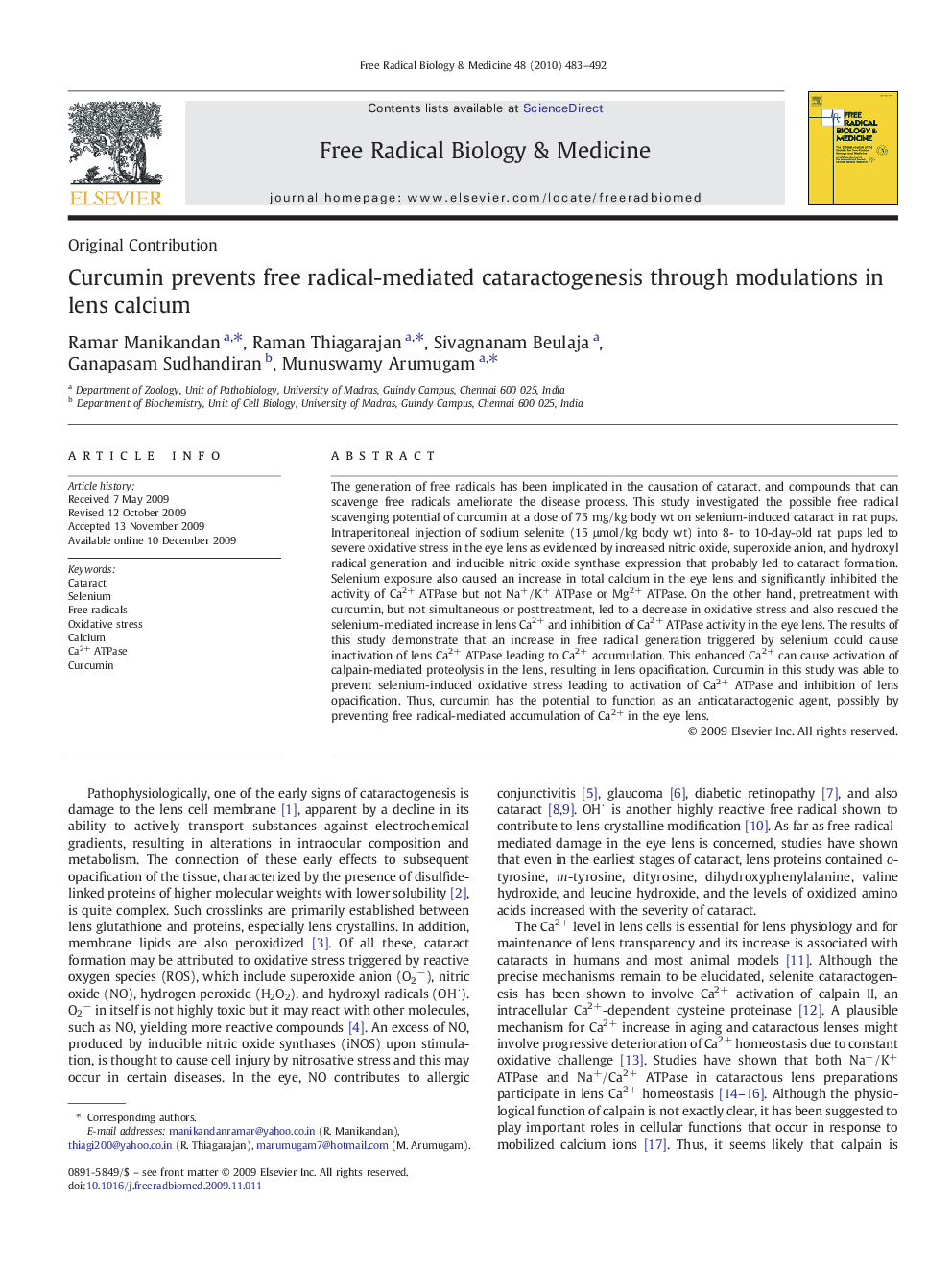| Article ID | Journal | Published Year | Pages | File Type |
|---|---|---|---|---|
| 1910265 | Free Radical Biology and Medicine | 2010 | 10 Pages |
The generation of free radicals has been implicated in the causation of cataract, and compounds that can scavenge free radicals ameliorate the disease process. This study investigated the possible free radical scavenging potential of curcumin at a dose of 75 mg/kg body wt on selenium-induced cataract in rat pups. Intraperitoneal injection of sodium selenite (15 μmol/kg body wt) into 8- to 10-day-old rat pups led to severe oxidative stress in the eye lens as evidenced by increased nitric oxide, superoxide anion, and hydroxyl radical generation and inducible nitric oxide synthase expression that probably led to cataract formation. Selenium exposure also caused an increase in total calcium in the eye lens and significantly inhibited the activity of Ca2+ ATPase but not Na+/K+ ATPase or Mg2+ ATPase. On the other hand, pretreatment with curcumin, but not simultaneous or posttreatment, led to a decrease in oxidative stress and also rescued the selenium-mediated increase in lens Ca2+ and inhibition of Ca2+ ATPase activity in the eye lens. The results of this study demonstrate that an increase in free radical generation triggered by selenium could cause inactivation of lens Ca2+ ATPase leading to Ca2+ accumulation. This enhanced Ca2+ can cause activation of calpain-mediated proteolysis in the lens, resulting in lens opacification. Curcumin in this study was able to prevent selenium-induced oxidative stress leading to activation of Ca2+ ATPase and inhibition of lens opacification. Thus, curcumin has the potential to function as an anticataractogenic agent, possibly by preventing free radical-mediated accumulation of Ca2+ in the eye lens.
